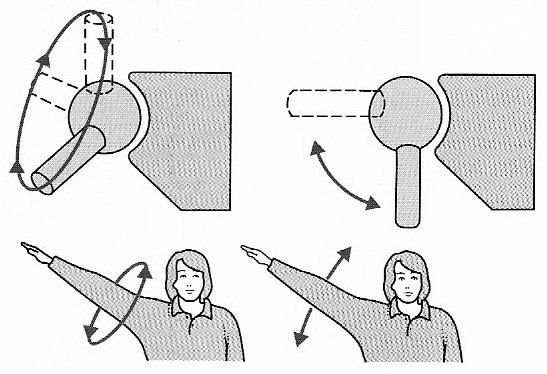ball-and-socket joint

A ball-and-socket joint is formed by the ball-shaped end of one bone fitting into the hollowin another. It allows movement backward or forward, movement sideways, and rotation..
A ball-and-socket joint, also known as a spheroidal joint, is a type of synovial joint that allows one part to rotate at almost any angle with respect to another. Ball-and-socket joints occur naturally, as in the human hip and shoulder joints, and are also used in machinery. Of all synovial or diarthrodial (fully moveable) joints in the body, ball-and-socket joints are the most mobile and allow movement in three planes.
 |
| Hip joint. |
The ball and socket joint is held together by a variety of tissues, including ligaments, tendons, and muscles. Ligaments are strong bands of connective tissue that help to stabilize the joint and prevent excessive movement. Tendons are similar to ligaments, but they are much thinner and connect muscles to bones. Muscles, on the other hand, are responsible for moving the joint and are attached to the ball and socket by tendons.
One of the most important features of the ball and socket joint is its ability to move in a variety of directions. The joint is able to rotate freely in all directions, allowing the ball to move within the socket in a circular motion. This allows the joint to perform a wide range of movements, including flexion, extension, abduction, adduction, and rotation.
In the shoulders, the ball and socket joint allows for a wide range of motion, including the ability to lift the arm above the head, bring it down to the side, and rotate it in a circular motion. In the hips, the ball and socket joint allows for movement such as walking, running, and jumping.
Despite the many benefits of the ball and socket joint, it is not without its limitations. Because the joint is composed of soft tissues, it is prone to wear and tear over time. This can lead to conditions such as osteoarthritis, which is characterized by the breakdown of the joint's cartilage.


